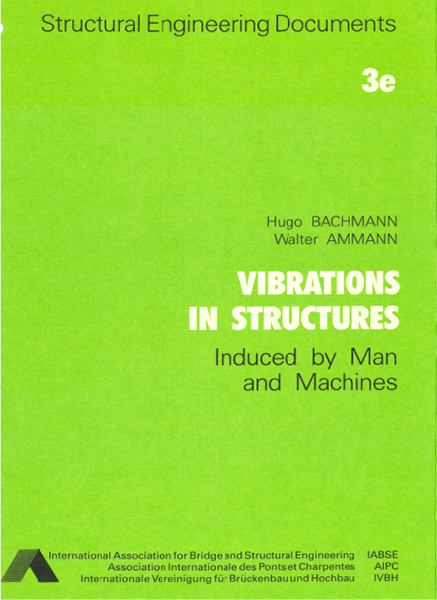Vibrations in Structures
Induced by Man and Machines

|
|
|||||||||||
Détails bibliographiques
| Auteur(s): |
Hugo Bachmann
Walter Ammann |
||||
|---|---|---|---|---|---|
| Médium: | livre | ||||
| Langue(s): | anglais | ||||
| Editeur: | International Association for Bridge and Structural Engineering (IABSE) | ||||
| Publié à: | Zurich, Suisse | ||||
|
|||||
| Page(s): | 176 | ||||
| Nombre total de pages (du PDF): | 188 | ||||
| Année: | 1987 | ||||
| ISBN-10: | 3-85748-052-X | ||||
| ISBN-13: | 978-3-85748-052-2 | ||||
| DOI: | 10.2749/sed003e | ||||
| Collection: | Structural Engineering Documents (No. 3e) | ||||
| Couverture: | broché | ||||
| Remarques: |
«Vibrations in Structures» concentrates on vibrations in structures as excited by human motion or machine operation. Man-induced vibrations may arise from walking, running, skipping, dancing, etc. They occur mostly in pedestrian structures, office buildings, gymnasia and sports halls, dancing and concert halls, stadia, etc. Existing publications treat by and large some isolated aspects of the problem; the present one attempts, for the first time, a systematic survey of man-induced vibrations. Machine-induced vibrations occur during the operation of all sorts of machinery and tools with rotating, oscillating or thrusting parts. The study concentrates rather on small and medium size machinery placed on floors of industrial buildings and creating a potential source of undesirable vibrations. The associated questions have rarely been tackled to date; they entail probiems similar to those of man-induced vibrations. The book is consciously intended to serve the practising structural engineer and not primarily the dynamic specialist. It should be noted that its aim is not to provide directions on how to perform comprehensive dynamic computations. Instead, it attempts the following:
|
||||
| Acheter chez: | |||||
| Copyright: | © International Association for Bridge and Structural Engineering | ||||
| License: | Cette oeuvre ne peut être utilisée sans la permission de l'auteur ou détenteur des droits. |
||||
